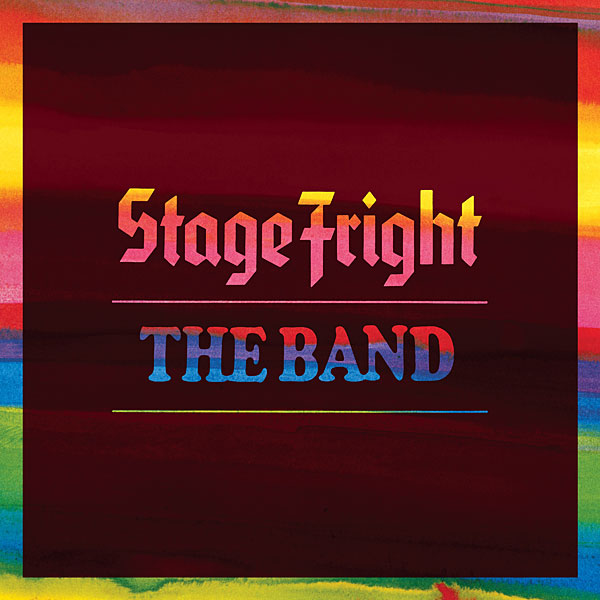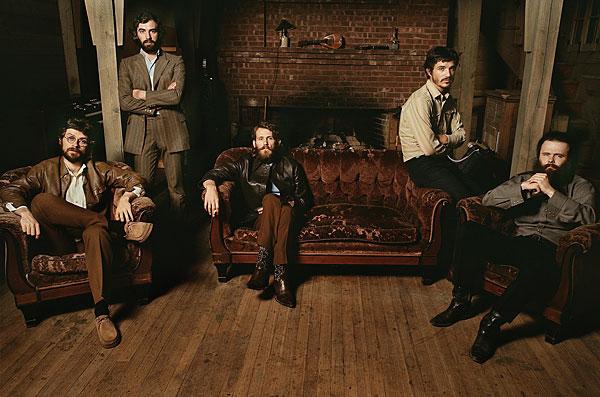Robbie Robertson: When I Paint My 5.1 Masterpiece Page 3
Robertson: Yeah, it was just the way I was hearing it. The part I was playing, to me, was more of a support role than it was a lead role. I just put it in that perspective.
Mettler: Ok, it's now a year later, and it's time to talk about Stage Fright. You and Bob Clearmountain have done yet another great 5.1 job here, I have to say. You must be really happy with how this one came out.

Robertson: I am exceptionally happy with the results of this one. For me, Stage Fright is personally very rewarding. I love the mixes on this. I love that I was able to go back to the original sequence on it. The whole package turned out to be a revelation to me.
I changed the sequence we had on it because the other guys had brought up some things, and I wanted them to be happy.
Mettler: Well, I have to say, as somebody who listened to the original Stage Fright sequence when it came out on vinyl, I used to put Side 2 on first after I had gotten through it a few times, because, to me, that was just the side that got me into the story better. The fact that you've resequenced it back to the way you had it before now tells the story better to me as the listener.
Robertson: 100 percent! And this is what it originally was! At first, everybody was really happy with that—and then we veered off the main path. Sometime after the album came out, the guys in The Band said, "You know, we should've stayed with that original sequence. It made the flow of the records much better." And I said, "I know!" (laughs) But anyway. Sometimes, something like that can happen, and it's rare for me to change things.
The original album was what it was under the circumstances, but deep down, I thought, "Oh man, I wasn't really involved. I wasn't there for the mixing the way I wish I could have been." [The Band were on tour when Stage Fright was being mixed in London.] To me, it was left in this limbo—and now, I have freed it from limbo. This was one of those things where I thought, "Oh my God, if Clearmountain and I could do what I would have done with the mixing. . ."—and then we did!
Mettler: I like that, for the majority of the album, your guitar textures are in the rear left over my left shoulder, and then it's mainly Garth in the rear right channel, doing all of his textures. The other guys [Rick, Levon, and Richard] are mostly in the front stage. And that's what you wanted, right? I feel like I'm sitting in the middle of the actual Woodstock Playhouse stage you recorded on, while you guys are on all those sides around me.

Robertson: Yep! Sometimes in the mixing, you look at it from the front facing the group, and sometimes you look at it from behind the group, you know what I mean? Sometimes you're sitting here, and sometimes you're sitting there. As Levon said many years ago, "I have the best seat in the house." Listening to it from different positions tells the story in a different way. And if what you're listening to is ok to you, they're all good in their own way. Sometimes you just think, "Whoa! As I'm sitting here listening to this version of 'Daniel and The Sacred Harp,' this is really where I would want to sit."
[Original Stage Fright mixing and recording engineer] Todd Rundgren had a pretty good take on that in the beginning too, I would say. He was right there. He was in the middle of all of this—and, you know, I liked it. I liked Todd's perspective as well. Anyway, taking all of these things into consideration, it really makes working on this music a lot of fun.
Mettler: One of the things I've tried to figure out is what my favorite surround mix on the album is. Sometimes it's "The Shape I'm In," sometimes it's "Stage Fright," and sometimes it's "The Rumor," depending on what I have on, and. . .
Robertson: (interjects) Depending on what you're wearing?
Mettler: (laughs) Hah, yeah! What I'm wearing, and which way I'm facing. What I mean is, each time I listen to Stage Fright, I hear different things depending on what I'm trying to focus on in any given track. Sometimes I'm hearing it like you're moving your head as you're playing, so I'm getting your point of view—like, now you're looking at Richard, so he technically shifts a little bit because you, the player, are moving your body just a little bit, maybe in reaction to something he or the other guys have done.
Robertson: Uh huh! It's like what we were talking about before—it's all of these perspectives, and you can also hear how we're having an awful lot of fun playing together. What I really mean is, it brings you inside the music in a way we could only do to a certain extent years ago. We could have it coming blasting at you, but we couldn't have it coming blasting around you.
Mettler: So, this is more like what you're hearing on that stage. Even in the original Woodstock locale for Big Pink, you guys needed to see each other to get that kind of connection to play certain things together.
Robertson: Yeah! We didn't know how to communicate musically if we couldn't see one another, read one another's lips, watch one another's accents, and sense the dynamics somebody was playing with. I mean, it's part of the language. When you're stuck in isolation rooms with headphones, you're just guessing at that. I think you can get more of a musical intimacy when everybody is in the same dimension in sound, and vision.
Mettler: Yeah. Somebody oughtta name a magazine after that. (Robertson chuckles) And I really like that you have three lead vocalists featured on "The Rumor" [Rick, Richard, and Levon], and they all get placed in different parts of the front stage. In a way, it's a different version of "The Weight" [the lynchpin track from Big Pink], because you had those same three guys lifting their vocals up into the heavens. If "The Weight" is more vertical, then "The Rumor" is more horizontal, in terms of the soundstaging.
Robertson: I wouldn't disagree with that. You just brought up something that struck me in this way for the first time—that Big Pink and The Band albums are more like movies, and Stage Fright is more like a stage play.
Mettler: I love that! What's coming next from you guys in 5.1? If you're following The Band's 50th anniversary trajectory, I suppose [September 1971's] Cahoots would be the answer, which would mean we'll finally get to hear "Life Is a Carnival" and "When I Paint My Masterpiece" in full surround. And, as you said in [your 2016 autobiography] Testimony, "Life Is a Carnival" is one of your favorite songs that you've written.
Robertson: I want us to do Cahoots in a different way in surround, but I can't talk about it right now. I can say I love "Life is a Carnival" because it was such a good time working on it with Allen Toussaint [the late, legendary New Orleans R&B musician who did the horn arrangements on the song].
Mettler: After you're done with Cahoots, I'd like you and Bob to mix your 1987 solo album, Robbie Robertson, in surround. I mean, songs like "Fallen Angel," "Showdown at Big Sky," and most especially "Somewhere Down the Crazy River," really deserve to be heard in 5.1.
Robertson: Well, that's another very good point you've made there, Mike. You know what you're talking about.
Mettler: I appreciate that! Last thing—one of the key lines for me in "Rockin' Chair" from The Band album is when Richard sings, "And I'm pushin' age 73." If you ever decided to sing that song yourself, you'd have to change that number to 78, right?
Robertson: (laughs heartily) Yeah, you're right. On my next birthday, I'm going to be 78, so I better get the rocking chair out! Well, I've still got a lotta work to do before I'll get out that rocking chair. I'm writing Volume 2 of Testimony, I'm doing the music for the next [Martin] Scorsese movie—oh, I've got a bunch of sh-- on my plate, actually! (chuckles)





























































